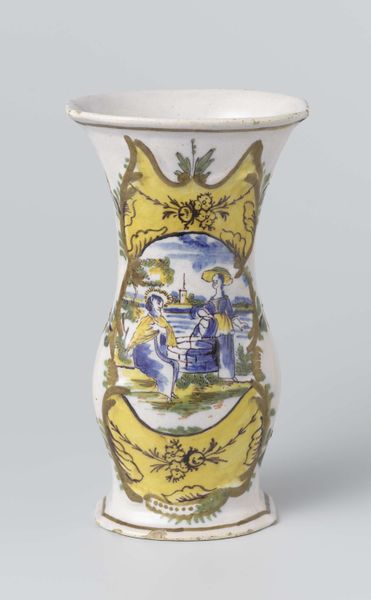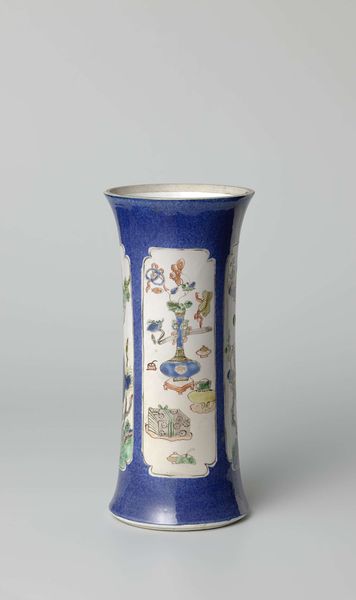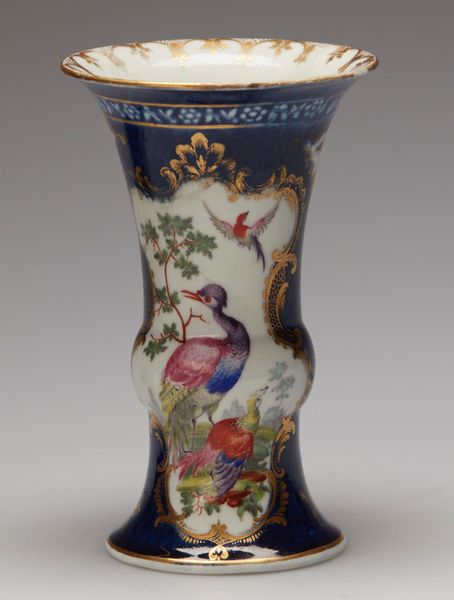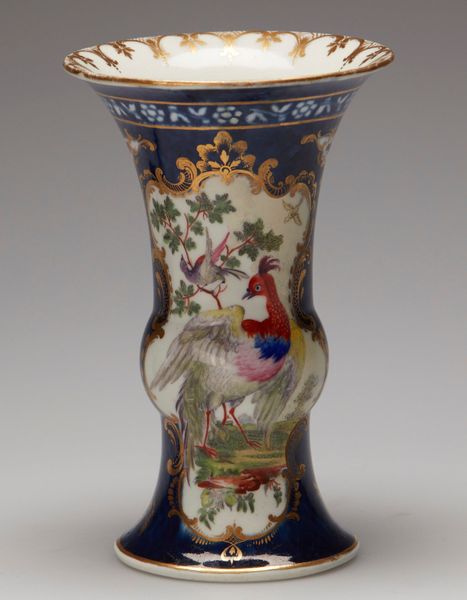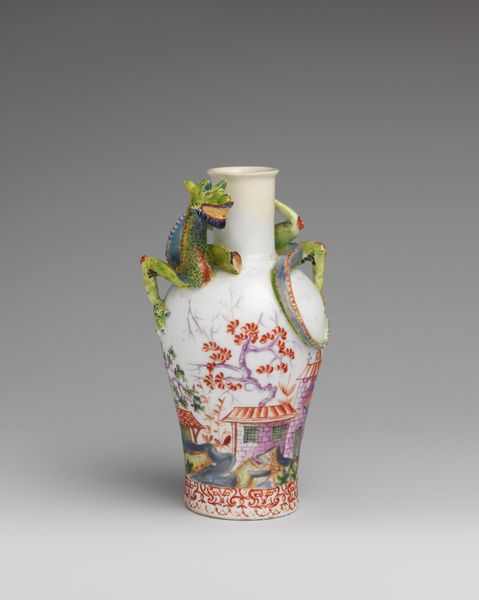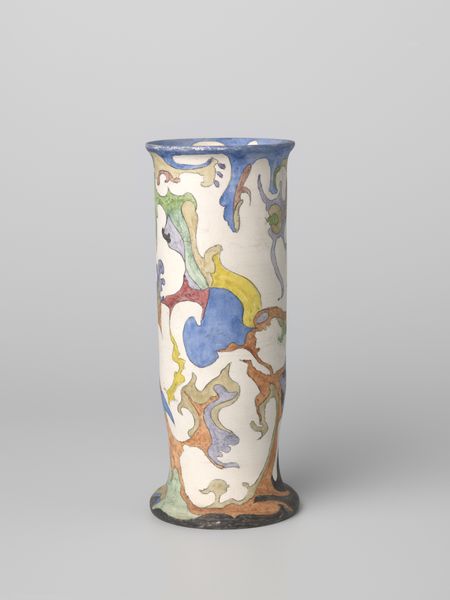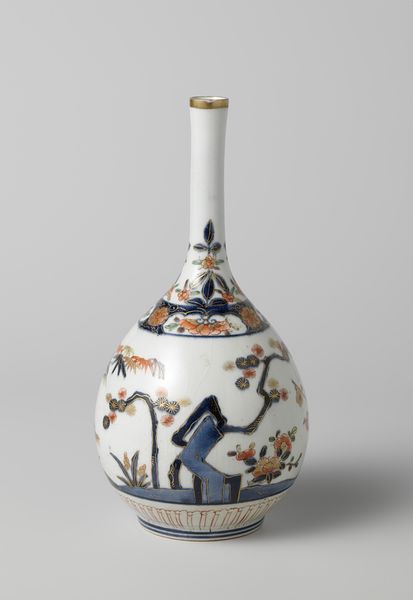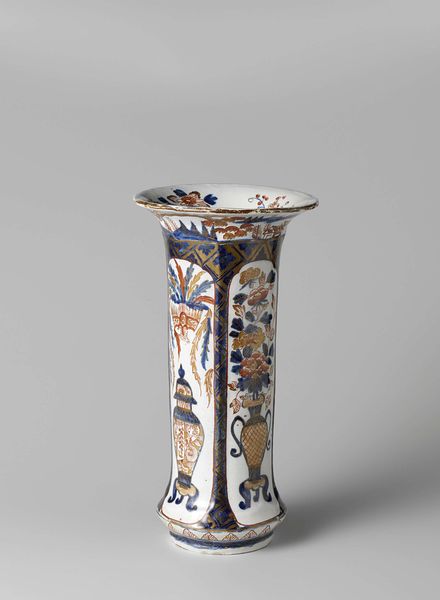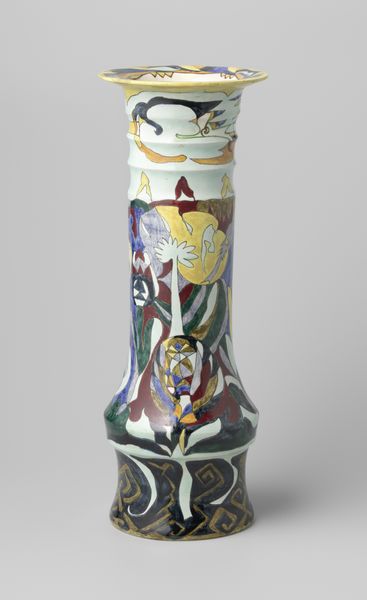
painting, ceramic, mural
#
decorative element
#
painting
#
landscape
#
ceramic
#
ceramic
#
genre-painting
#
decorative-art
#
mural
Dimensions: height 22.6 cm, width 13.8 cm, depth 9.6 cm
Copyright: Rijks Museum: Open Domain
Editor: Here we have a faience vase, probably created sometime between 1810 and 1840, crafted at De Klaauw. The ceramic surface is decorated with these almost quaint painted scenes. I find the color palette particularly striking in its limited range. What stylistic elements draw your attention? Curator: It is important to observe how the framing devices function. Note the flower, but how it simultaneously complements and conflicts with the narrative scene below. The dark blue borders work as cartouches, but they're interrupted, broken up by the central image. It isn't successful, structurally. Editor: I see what you mean. The interruption almost seems… deliberate? A subversion? Curator: Perhaps. The intentionality is difficult to verify, yet the interplay between the elements is palpable. Consider the depiction of depth within the painted scene; the rudimentary perspective flattens the image, negating any illusionistic qualities. Is this choice naive or calculated? Editor: So you're saying that the vase operates on multiple visual planes simultaneously, almost in conflict with one another? The landscape is conventional, but not convincingly so? Curator: Precisely. The artist plays with expectation, creating visual interest through incongruity. The success, or failure, exists in the negotiation of these disparate formal elements. Editor: It’s funny, I wouldn’t have seen that tension without your insights. I was so focused on the simple presentation of the depicted man. Curator: That's why visual analysis is useful, even for decorative objects. It allows one to deconstruct our first impressions into component elements. Editor: This has really expanded my understanding. I’m going to try to use formal analysis more in my own research.
Comments
No comments
Be the first to comment and join the conversation on the ultimate creative platform.
